Overview
Our sharpening service will provide a good serviceable edge on the blade. The result is typically “very sharp” with a small secondary bevel and a bit of an “apple seed” profile. The resulting edge is somewhat dependent on the particular blade. Some blades will take and hold sharper edges than others and the thickness of the blade will determine how wide the bevel will need to be. We adjust the angle of the edge to suit the specific blade and attempt to get as close to a bevel-less edge as possible without marring the surface of the blade.
The Sharpening Process
The sharpening service is done with a belt sander. The process involves many passes with sanding belts of various grits. The blades are rested between passes to prevent them from becoming hot and damaging their temper. By default we will sharpen as much of the blade as possible including any false edges if appropriate. If you have a different preference, feel free to make that request in the special instructions at check out. We can sharpen only the last half or third of an edge, for example. Our sword sharpening expert has personally sharpened several thousand swords at this point, so will provide you with a professional service.
What the Service is Not
The resulting edge will be “sword sharp” not razor sharp. Our goal is to provide you with a usable edge for cutting practice that will hold up to some use and not require constant re-sharpening. In other words, we intend to provide you with a serviceable weapon, not a personal grooming implement. The service will not provide a completely bevel-less edge. To create that type of edge will necessarily scratch up the blade surface and we lack the machinery and time to provide a full re-polishing of a blade’s surface. A service of that nature would be significantly more expensive as a great deal more time would be required. We do not offer this type of service at this time.
Disclaimer
We make no guarantee that the resulting edge will meet with your expectations. Every blade is different and some will take and hold a sharper edge than others, due to the blade material, heat treatment or geometry. Some customers can also have incorrect assumptions about sword sharpness and improper expectations as a result. All we can say for sure is that the resulting edge will be sharper than the default edge, in most cases, significantly so. We can not provide any refunds for the service once it has been completed, so consider it to be provided “as is”. That being said, if you are unhappy with the product for any reason, we do still allow you to return the item for a full refund, including the sharpening costs under our normal return policy. This does not apply to special sharpening requests, for example if we sharpen something specially for you that does not normally list that option on our site. The vast majority of our customers are happy with the results of the service, so as long as you keep the above mentioned in mind, we are confident you will be pleased with the results as well.


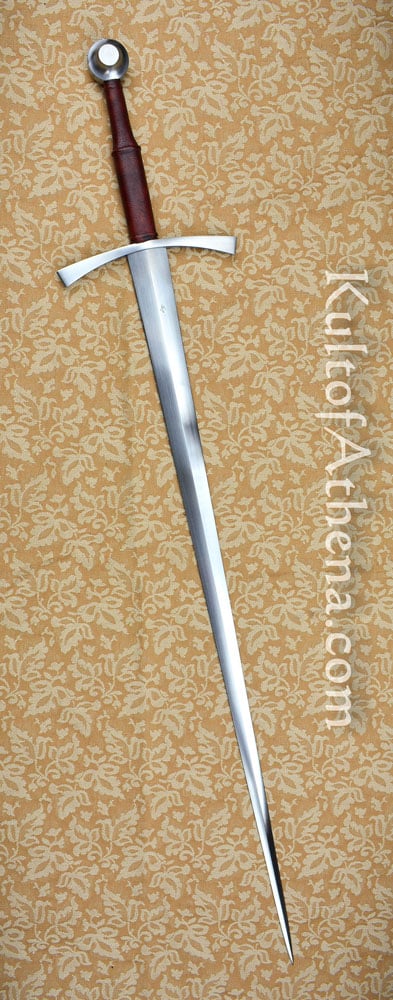

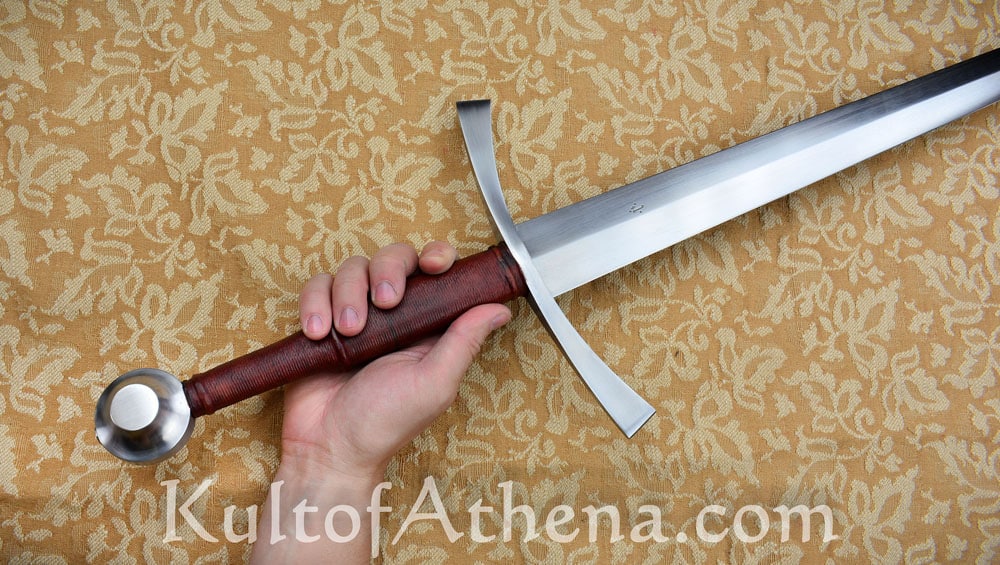
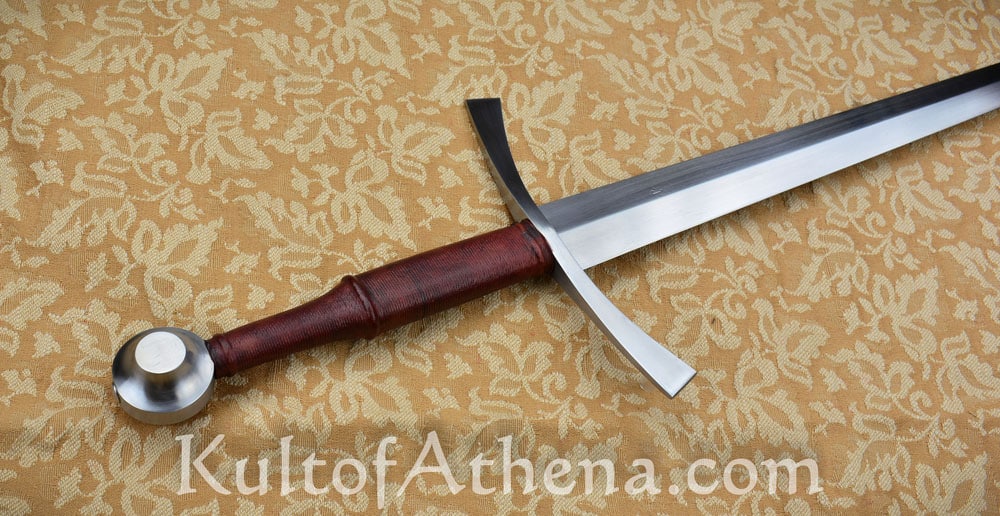

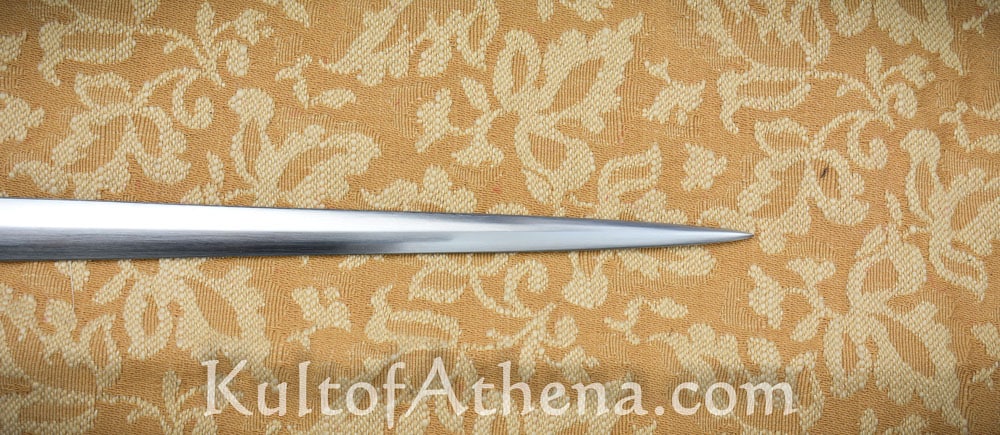
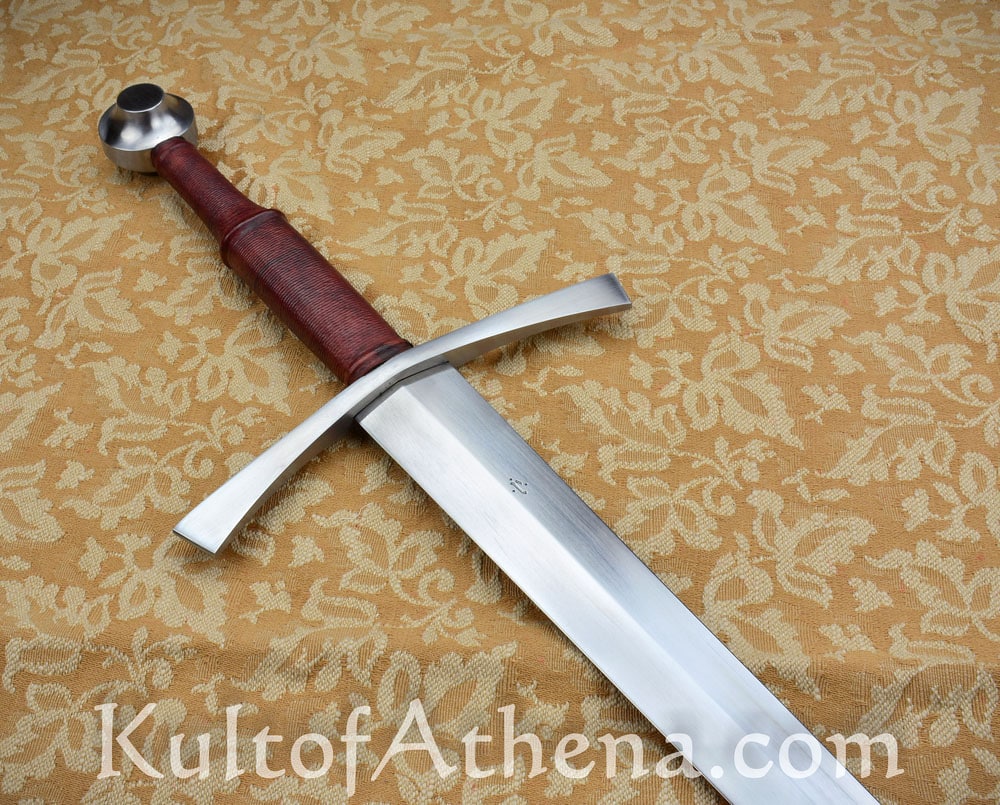
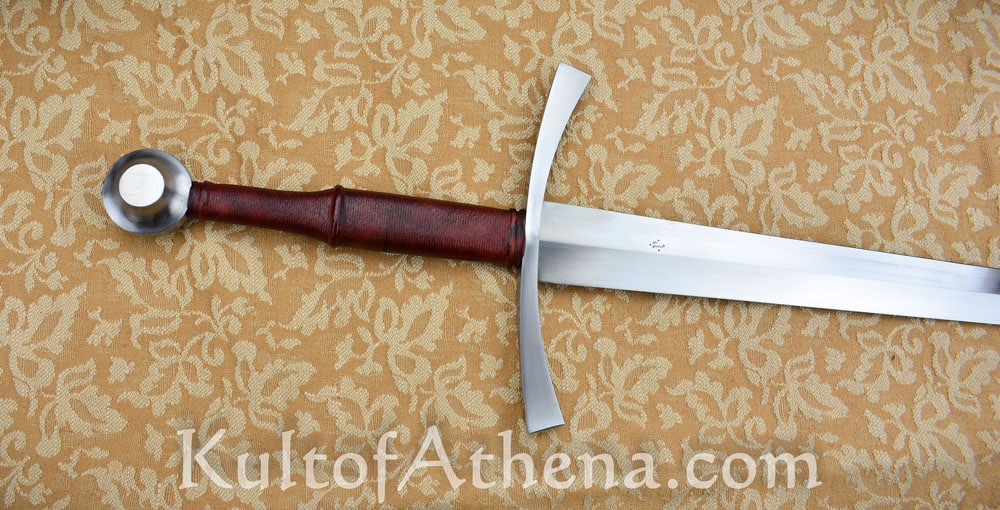
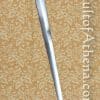

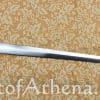
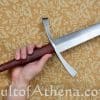
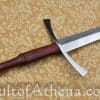
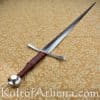
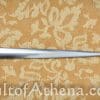
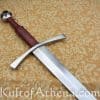
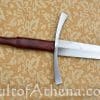
Jeremiah Swanger (verified owner) –
I’ll start by saying this– if you’re in the market for a late-14th-to-mid-15th century longsword, you really need to consider this sword!
Albion has effectively mastered the “cut-and-thrust” oriented Type XV/XVa blade– the taper is very gradual and linear, ending in a nearly needle-fine point. I say “cut-&-thrust”, as, while I doubt this sword will perform like an XVIIIc in a cutting competition, many historical examples are even more thrust-oriented than this, but Albion wisely recognized the lack of a market for such a sword in today’s collector/enthusiast environment. The geometry is very crisp, with only a very, very slight asymmetry in the profile taper near the tip, which I believe is perfectly acceptable for this type of sword at this price point, and does not affect the functionality whatsoever.
The Fiore model tends to get overlooked in favor of the Ringeck’s scent-stopper pommel, but I will make it a point to say that the shape of this particular Type J wheel pommel is absolutely perfect for this sword– just rest the edge of the palm of your weak hand against the pommel’s raised center (as can be seen in the photos, the bevel of the pommel center is concave), and the result is a surprisingly-comfortable, versatile, and secure grip!
As noted in the video review someone else did, the Fiore is the type of longsword that “wants” to be wielded with two hands. Despite the blade being narrow and strongly-tapered, it is quite thick, and, despite feeling quick and nimble overall, feels very “authoritative” in the hand. It “wants” to move, but also feels like it would be quite strong in the bind.
The combination I purchased was satin hilt components with an Oxblood leather grip, which is shaped sensibly, with the riser placed in a useful position. My sword is almost a dead-ringer for the example in Kult of Athena’s photos, as the “Oxblood” is basically a Medium Brown with a slight tinge of Crimson, and looks very handsome on this sword!
In motion and practice, the sword flowed naturally through the various guards and strikes I learned from Liechtenauer, Talhoffer, and the Codex Wallerstein. Of course, the edge is far too sharp to half-sword effectively, as Albion has probably assumed that the typical sword buyer will want to cut with it, and they’re probably not wrong!
I consider this the most attractive of Albion’s Type XVa longswords, and it looks even better in person! That it also feels great and its’ details are all very well-thought-out make this a compelling option for anyone wanting a high-quality, “real” longsword!